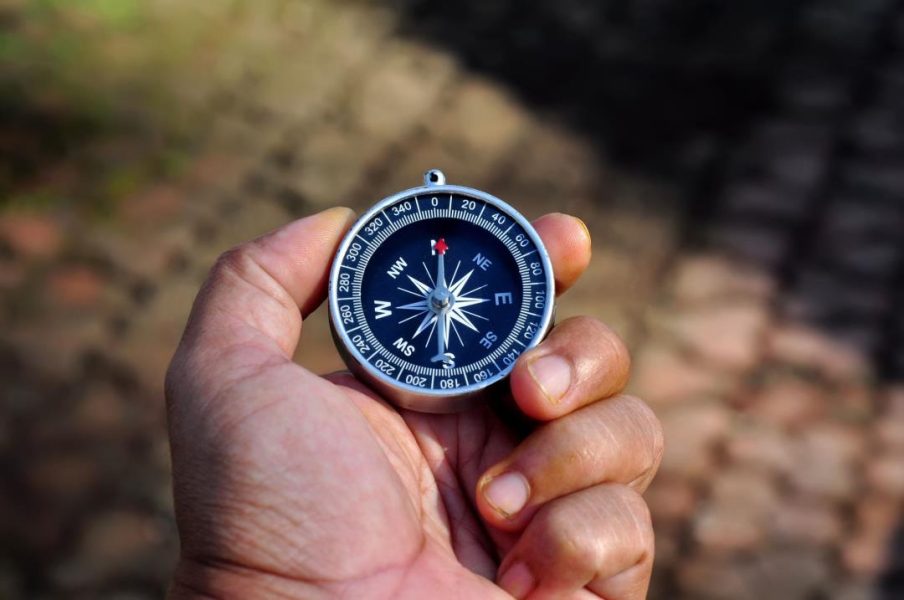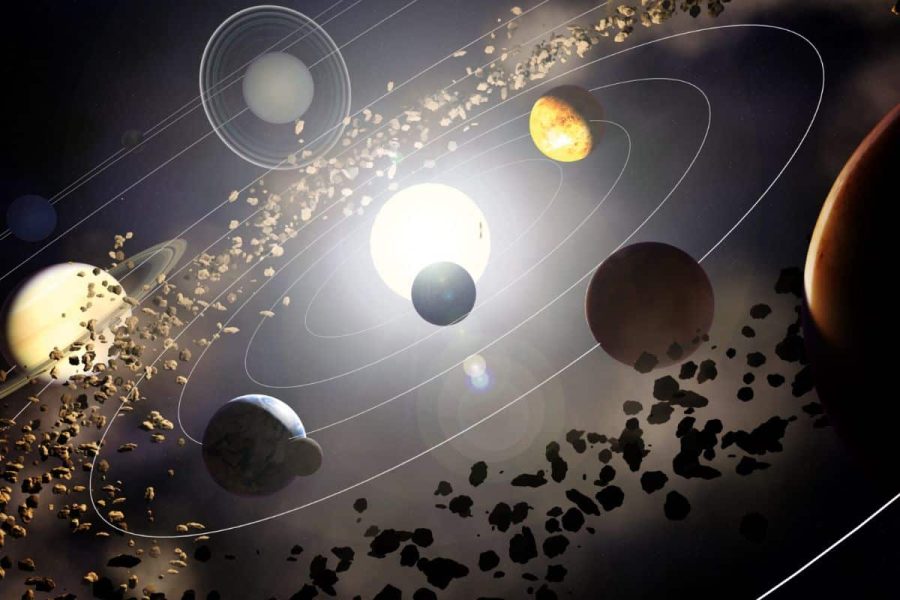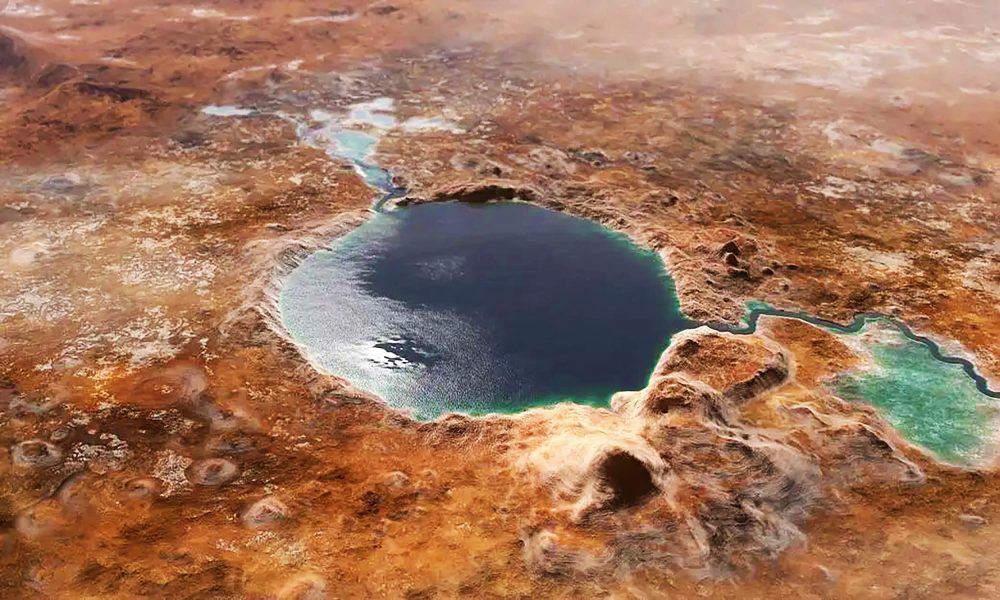Giant Glacial Features Unearthed Under the North Sea Rewrite Ice Age History – The Daily Galaxy –Great Discoveries Channel

Deep beneath the North Sea lies a hidden world shaped by a massive Ice Age glacier that once dominated the landscape. Recently uncovered by scientists, these ancient landforms are offering clues to a mysterious climatic shift that reshaped Earth over a million years ago. What secrets do these buried formations hold about our planet’s frozen past—and what can they reveal about its future?Beneath the muddy depths of the North Sea, scientists have uncovered an ancient, frozen world shaped by a massive Ice Age glacier that swept across the region around 1 million years ago. Using advanced soundwave imaging, researchers revealed intricate landforms preserved under nearly a kilometer of sediment. These features shed light on how a colossal ice sheet once moved across the landscape, offering valuable insights into Earth’s glacial history and climate transitions. The findings, published in the journal Science Advances, highlight a pivotal period in Earth’s climatic evolution, providing new clues about a mysterious shift in glacial cycles.For years, scientists believed the North Sea was shaped by multiple smaller ice sheets advancing and retreating over time. However, this new study challenges that assumption. High-resolution imaging of the seabed revealed patterns that are consistent with a single, enormous ice sheet, rather than repeated glacial activity. Christine Batchelor, a senior lecturer in physical geography at Newcastle University, explained the significance of this discovery: “We only see conclusive evidence for one big ice advance during that time period.”The study’s imaging techniques captured both streamlined, elongated landforms, which indicate the direction of ice flow during its advance, and transverse features, which mark where the ice retreated. “When the ice is advancing, it produces streamlined, elongated features that are sculpting the sediment in the direction of ice flow,” Batchelor said. “When the ice is retreating, you get features that show the imprint of that grounded ice margin as it steps back, so those tend to be transverse to the ice flow direction.” These distinctive patterns offer an unprecedented glimpse into the behavior of ancient glaciers, revealing how they shaped the North Sea’s hidden landscape.This massive glacier existed during the Mid-Pleistocene Transition (MPT), a critical period between 1.3 million and 700,000 years ago. During this time, Earth’s glacial cycles underwent a dramatic shift, transitioning from shorter 40,000-year cycles to longer and more intense 100,000-year cycles. Understanding the extent and behavior of the North Sea ice sheet during this period is crucial for decoding the causes of this climatic transformation.“The main reason that we’re interested in this broad time period around 1 million years ago is because it’s a time when we have a shift in climate going on,” Batchelor explained. “The glacial periods get longer, and they get more intense, so there’s quite a lot of work that is focused on trying to figure out why that shift happened.” The newly uncovered landforms provide vital data for reconstructing the conditions that led to this profound change in Earth’s climate.The glacier’s movements carved and molded the North Sea’s seabed, leaving behind striking features that tell the story of its advance and retreat. One particularly fascinating discovery is a series of crevasse-squeeze ridges, which form when an ice sheet settles into soft sediment before retreating. These ridges are created as the ice pushes sediment into cracks at its base, leaving an imprint that is preserved when the ice lifts away.“Being able to understand and to model exactly where those ice sheets were helps us to understand those feedbacks which are still going on, albeit in a different form, today,” Batchelor said. By studying these formations, researchers can refine models of glacial dynamics and their interaction with climate systems, offering insights into both ancient and modern ice sheets, including those in Greenland and Antarctica.The discovery of these Ice Age landforms is not just a window into the past—it has significant implications for understanding the future. The way glaciers advanced and retreated in response to climate changes during the Mid-Pleistocene Transition can help scientists predict how modern ice sheets might respond to ongoing global warming. Batchelor emphasized that studying these ancient features allows researchers to better understand feedback mechanisms that are still at play in today’s climate, albeit under different conditions.As ice sheets in Greenland and Antarctica face accelerated melting due to rising temperatures, insights from the North Sea’s buried landscape could be key to predicting sea-level rise and other impacts of climate change.The intricate landforms beneath the North Sea have remained hidden for over a million years, preserved under nearly a kilometer of sediment. Their discovery represents a treasure trove of geological and climatic history, offering a rare glimpse into the Earth’s glacial past. These features not only tell the story of a colossal glacier that once shaped the region but also provide a tangible link to a critical period when the planet’s climate underwent a dramatic transformation.Using cutting-edge soundwave imaging, researchers have brought these long-buried landscapes to light, revealing the dynamic processes that occur when massive ice sheets advance, retreat, and interact with their environments. Each ridge, groove, and crevasse imprint captured in the data serves as a clue to the ice sheet’s behavior and its response to shifting climatic conditions.Beyond their scientific significance, these discoveries emphasize the importance of preserving and studying such hidden landscapes. They remind us of the incredible forces that have shaped the Earth over millennia and the lessons they hold for understanding the future. As researchers delve deeper into the data, they aim to uncover not only how these landforms were created but also how the insights gained can be applied to modern-day challenges like rising sea levels and the melting of polar ice caps.Got a reaction? Share your thoughts in the commentsEnjoyed this article? Subscribe to our free newsletter for engaging stories, exclusive content, and the latest news.Comment Save my name, email, and website in this browser for the next time I comment.
© 2024 | Daily Galaxy | All rights reserved
Source: https://dailygalaxy.com/2025/01/giant-glacial-features-under-north-sea/





